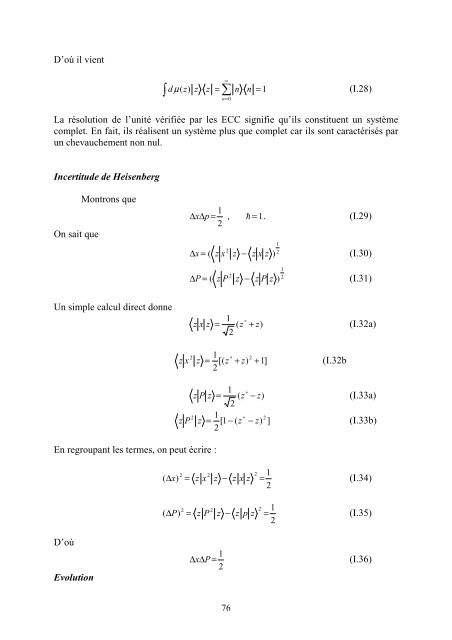Annexe IV Modèle de Hubbard standard et états cohérents - Toubkal
Annexe IV Modèle de Hubbard standard et états cohérents - Toubkal
Annexe IV Modèle de Hubbard standard et états cohérents - Toubkal
You also want an ePaper? Increase the reach of your titles
YUMPU automatically turns print PDFs into web optimized ePapers that Google loves.
D’où il vient∞∑∫ dµ( z) z z = n n = 1(I.28)n=0La résolution <strong>de</strong> l’unité vérifiée par les ECC signifie qu’ils constituent un systèmecompl<strong>et</strong>. En fait, ils réalisent un système plus que compl<strong>et</strong> car ils sont caractérisés parun chevauchement non nul.Incertitu<strong>de</strong> <strong>de</strong> HeisenbergOn sait queMontrons que1∆x ∆p= , h = 1. (I.29)212∆ x = ( z x z −2z x z )(I.30)12∆ P = ( z P z −2z P z )(I.31)Un simple calcul direct donne1 ∗z x z = ( z + z)2(I.32a)1 22∗z x z = [( z + z)+ 1](I.32b2z Pz P z =2z=1( z2[1 − ( z2∗− z)1 ∗ 2− z)](I.33a)(I.33b)En regroupant les termes, on peut écrire :2 22 1( ∆x ) = z x z − z x z =2(I.34)2 22 1( ∆P ) = z P z − z p z =2(I.35)D’oùEvolution1∆x ∆P=(I.36)276
















